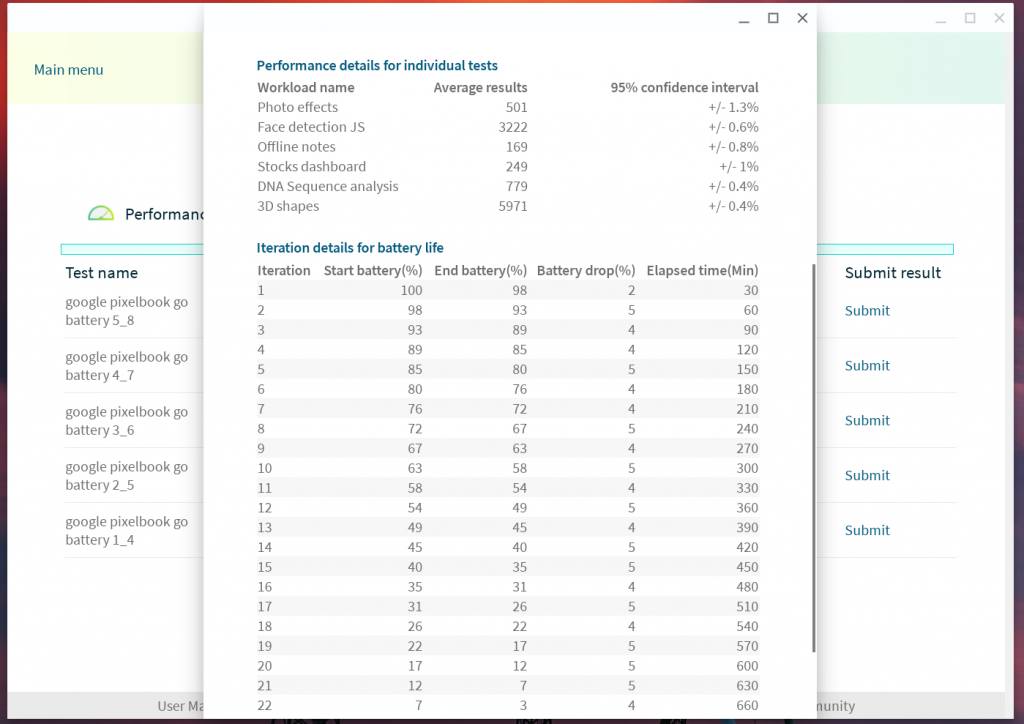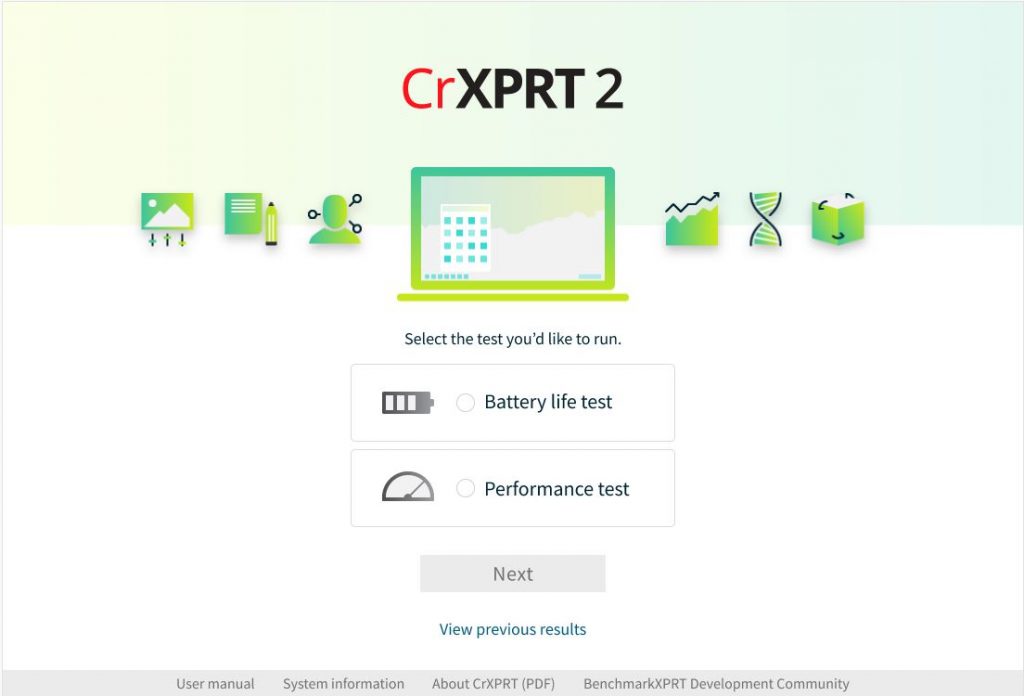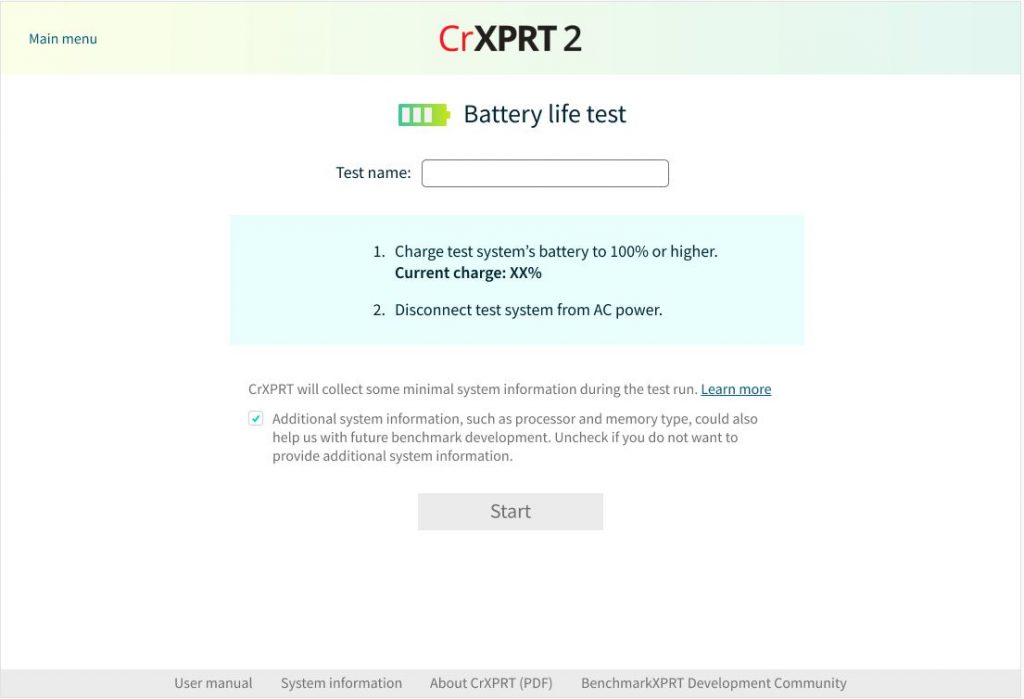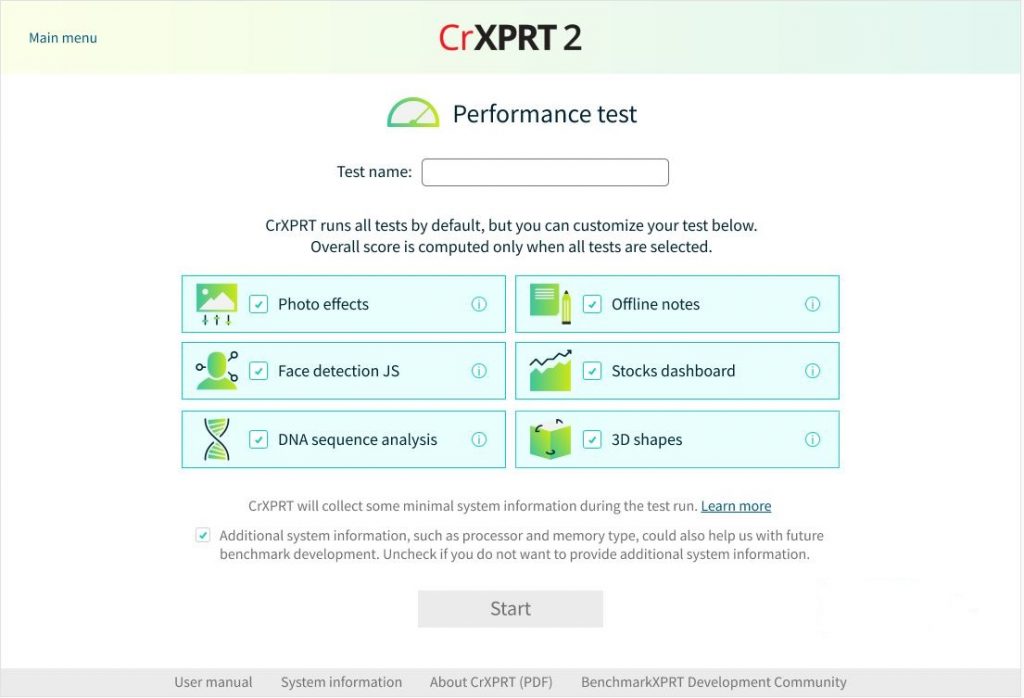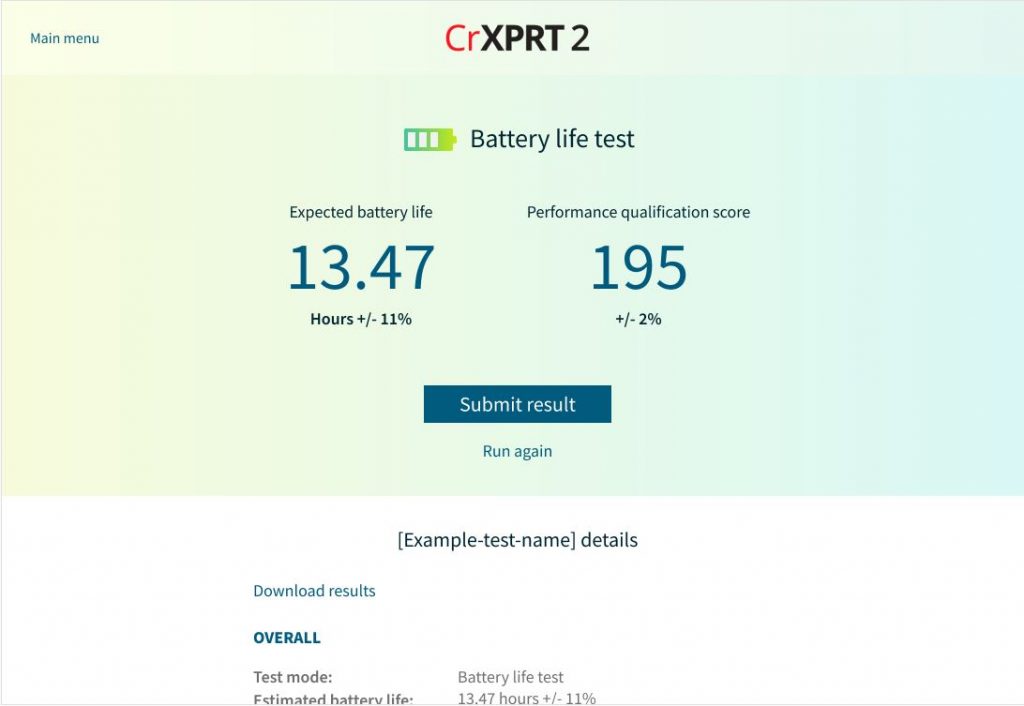In recent lab tests, we’ve encountered an error during the CrXPRT 2 battery life test that prevents the test from completing and producing a battery life estimate. As the screenshot below shows, when the error occurs, CrXPRT stops running its normal workload cycle and produces a “Test Error” page. We have seen this behavior on systems running Chrome OS v89.x and v90.x, across multiple vendor platforms. In our testing, Chromebooks running Chrome OS v88.x and earlier versions continue to complete the battery life test without any issues.
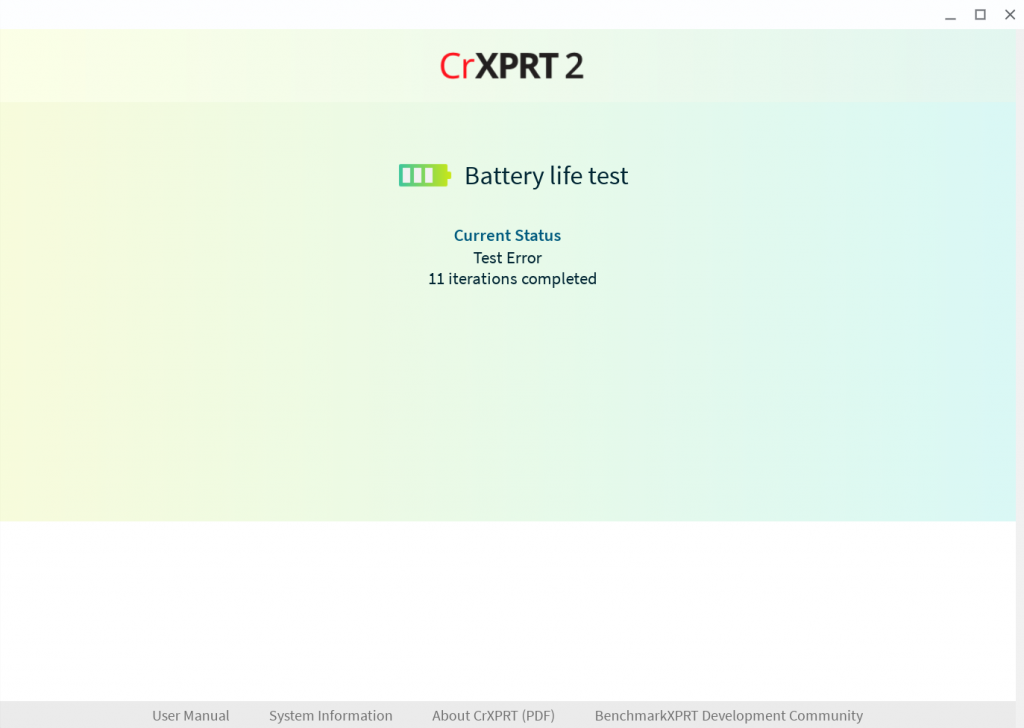
The error occurs consistently on every Chromebook running v89.x or v90.x that we’ve tested so far. However, the timing of the error varies from run to run on the same system. Sometimes, CrXPRT stops running after only a few workload iterations, while at other times, the battery life test runs almost to completion before producing the error.
We’re actively investigating this problem, but have not yet identified the root cause. We apologize for the inconvenience that this error may be causing CrXPRT 2 testers. As soon as we identify the root cause of the problem and have ideas about possible solutions, we will share that information here in the blog. If you have any insight into recent Chrome OS changes or flag settings that could be causing this problem, please let us know!
Justin


